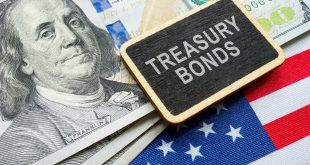The U.S. dollar faced renewed pressure on Wednesday, sliding to multi-month lows as persistent trade tensions and cautious remarks from the Federal Reserve chief in Chicago kept investors on edge. The dollar’s decline, mirrored by a drop in U.S. Treasury yields, set the tone for a volatile day in global markets. Against this backdrop, safe-haven assets like gold soared to record highs, while major currency pairs and commodities displayed mixed performances. As markets brace for key economic data and central bank decisions, the interplay of tariffs, monetary policy, and global trade dynamics is shaping a complex outlook for Thursday, April 17.
The U.S. Dollar Index plummeted to the low-99.00s, reflecting investor unease over ongoing tariff disputes and their potential to disrupt global trade. Despite a neutral stance from the Federal Reserve, which emphasized a wait-and-see approach to interest rate changes, the dollar struggled to find footing. Falling U.S. yields across the yield curve further eroded its appeal. On Thursday, investors will turn their attention to a slew of U.S. economic indicators, including Building Permits, Housing Starts, the Philly Fed Manufacturing Index, and weekly Initial Jobless Claims, which could provide fresh clues about the economy’s resilience amid trade uncertainties.
In Europe, the euro regained momentum, climbing back toward the 1.1400 level after two days of declines. The European Central Bank (ECB) is widely expected to cut interest rates by 25 basis points at its upcoming meeting, a move that could influence the euro’s trajectory. While the ECB’s decision is largely priced in, any surprises in its forward guidance could spark volatility. The euro’s recent strength, despite the anticipated rate cut, underscores the dollar’s broader weakness and the market’s focus on trade-related risks over monetary policy divergence.
The British pound also shone, briefly touching fresh highs just shy of the critical 1.3300 mark before easing slightly. The pound’s rally reflects optimism about the UK economy, though momentum waned as traders awaited further catalysts. Looking ahead, the UK’s preliminary S&P Global Manufacturing and Services PMIs, due on April 23, will offer insights into the health of the economy. For now, the pound remains a standout performer, buoyed by relative stability compared to the tariff-driven turmoil affecting other markets.
The Japanese yen, typically a safe-haven currency, faced its own challenges, with the USD/JPY pair slipping to new seven-month lows below 142.00. Despite an initial uptick, the pair resumed its downward trend as trade concerns overshadowed Japan’s monetary policy divergence with the U.S. On Thursday, Japan’s Balance of Trade data and weekly Foreign Bond Investment figures will be closely watched for signs of how global trade tensions are affecting the export-driven economy. The yen’s inability to capitalize fully on risk-off sentiment highlights the complex dynamics at play in currency markets.
Elsewhere, the Australian dollar surged to multi-week highs, approaching the 0.6400 level. The Aussie’s gains were driven by positive market sentiment and anticipation for Australia’s critical labor market report, which could influence the Reserve Bank of Australia’s policy outlook. Meanwhile, commodity markets saw uneven movements. Crude oil prices edged up to around $62.00 per barrel, supported by news of new U.S. sanctions targeting Chinese importers of Iranian oil. The sanctions added to fears of supply disruptions, keeping oil prices volatile.
Safe-haven assets stole the spotlight, with gold prices soaring past $3,340 per troy ounce to an all-time high. The surge was fueled by tariff-driven uncertainty and the dollar’s weakness, which encouraged investors to flock to precious metals. Silver also rallied, climbing above $33.00 per ounce to a two-week peak. The robust demand for safe-haven assets underscores the market’s growing anxiety about the global economic outlook, as trade disputes and geopolitical risks continue to dominate headlines.
As markets head into Thursday, the focus will remain on how central banks and economic data navigate the tariff-laden landscape. With the dollar under pressure, safe-haven assets in demand, and major currencies showing resilience, the global financial system is at a crossroads. Investors will be watching closely for signs of stability or further turbulence, as trade policies and monetary decisions shape the path ahead.

 Noor Trends News, Technical Analysis, Educational Tools and Recommendations
Noor Trends News, Technical Analysis, Educational Tools and Recommendations



